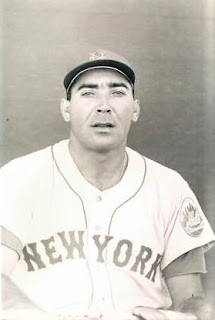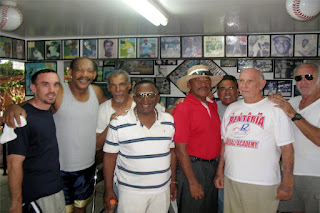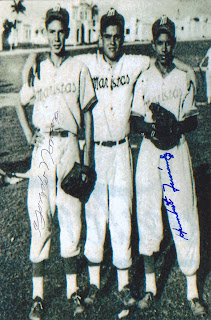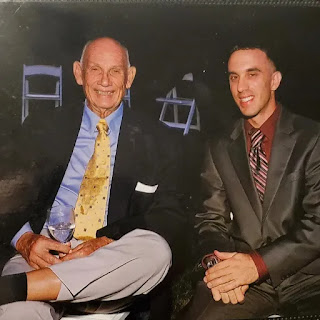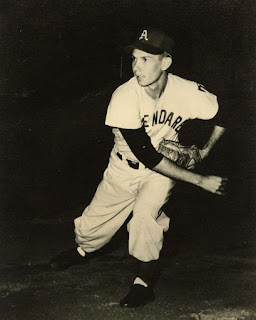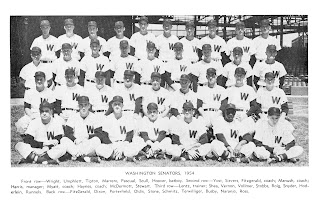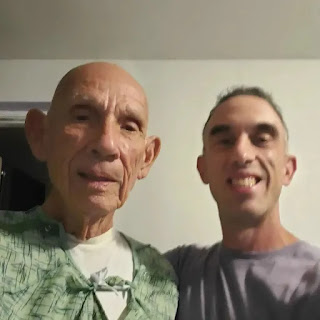Hector Maestri, one of only nine major leaguers to ever play for both versions of the Washington Senators,
passed away Friday February 21, 2014 in Miami according to his former teammate Jose Padilla. He was 78.
Born April 19, 1935 in La Habana, Cuba,
Maestri was originally signed as a shortstop to the Senators
organization in 1956 by the legendary scout Joe Cambria. Excited with
the opportunity to follow in the Senators pipeline of rich Cuban talent,
Maestri’s world was turned upside down only a few weeks into his
professional baseball career.
“I played three [sic] games in Fort Walton Beach and they released me,” said Maestri in a 2012 interview with the author.
 |
| Hector Maestri Card / N. Diunte |
Even though Maestri was deeply disappointed by the lack of a time the
Senators gave him, he did not want to return to Cuba. Instead, he went
to Houston to live with his uncle and work. It was there that he had a
second chance at his baseball career.
“My uncle introduced me to a Mexican-American who had a baseball team
out there,” he said. “The guy wanted me to play with him, so they gave
me a job and I played baseball.”
While he was playing on the semi-pro circuit in Houston, he was
approached by Senators scout Joe Pastor who offered him another shot
with Washington. Maestri had his reservations about re-signing with the
organization.
“I told him I was very angry because they didn’t give me a chance,” he said. “Fifteen days wasn’t enough.”
After Pastor reassured him that he would get a longer look, Cambria
signed Maestri during the off-season in Cuba. Blessed with an
exceptional arm, Maestri still fancied himself as a shortstop, but the
Senators had other plans. Maestri split time between pitching and the
infield in 1957 with Class D Elmira, N.Y., but when he was asked to
pitch an impromptu bullpen session for Senators Vice President Joe
Haynes during spring training in 1958, management made it very clear
what his permanent role would be.
“The bullpen was near the clubhouse,” he recalled. “Anytime you threw
the ball, there was a big echo. When I threw the ball, I looked [over]
at him and he was smiling.
“The people in the clubhouse came out and said, ‘Dammit, who was
throwing that ball?’ I was throwing very, very hard. We didn’t have
radar guns, but they told me I was around 95. Mr. Joe Haynes came to me
and said, ‘If I see you in the infield, I will throw you out. You are a
pitcher.’”
Maestri spent another season at Elmira honing his craft on the mound,
and it paid off. He finished with a 16-11 record, broke the league
record for strikeouts and earned MVP honors for the team.
“I broke the strikeout record of Sal Maglie,” Maestri said. “He had 198 and I put [up] 210 in 156 innings.”
In 1959, he inched his way closer to the majors, playing at Class B
Fox Cities where he was pared up with player-manager Jack McKeon. His
11-7 record earned him a AAA contract with Washington’s affiliate in
Charleston.
He went home that winter and pitched for Cienfuegos in the Cuban
Winter League, leading them to not only the league championships, but a
sweep of the 1960 Caribbean Series.
It was the beginning of a year filled with highlights for the
hard-throwing Cuban pitcher; however, it wasn't a straight rise to the
top. Coming off of his championships in winter ball, he hit a bump in
the road at the end of spring training in 1960. Just as the season was
about to start, Charleston sent him down to Charlotte in the Class A
Sally League. He wasn’t pleased with the decision and set out to prove
to management that they made a mistake demoting him.
“I go to Charlotte, and on the first day our manager Gene Verble, told me I was going to be in short relief,” he recalled.
Verble summoned Maestri to close the game, and he delivered the goods.
“I threw nine pitches and struck out all three guys,” he said.
Nineteen-sixty was a banner year for Maestri. He was cited in the
August 28, 1960 issue of Sports Illustrated for pitching a perfect game in relief during the course of the season.
“Hector Maestri, Charlotte (N.C.) South Atlantic League relief
pitcher, did not give up a walk, a hit or a run in hurling nine
consecutive innings of perfect baseball over a five-game span, went 16
consecutive innings before yielding his first hit.”
Cut from the organization only a few years earlier, Maestri made good
on his second calling, earning a promotion to the major league club
when rosters expanded in September. Biding his time in the bullpen, he
finally was put into action on September 24, 1960 in relief against the
Baltimore Orioles.
“I pitched two innings and didn’t allow any runs,” he said.
Maestri carried that momentum into winter ball, winning another
championship with Cienfuegos. Along with his second championship came
another career altering event, the 1961 Expansion Draft.
The original Washington Senators became the Minnesota Twins and
Washington created a new team to represent the nation’s capital.
The new Senators paid Clark Griffith $75,000 for the rights to Maestri. He saw this as an opportunity to negotiate for a higher salary.
“At that time the big league contract was $6,000,” he said. “I was so
fresh, I said, ‘If you don’t give me $15,000, I don’t go.’”
To further complicate matters,
relations between Fidel Castro and the United States went sour,
leaving the future of all of the Cuban players, including Maestri in
doubt. Luckily for Maestri, tensions eased up and he was able to
negotiate a raise to $11,000.
Unfortunately, all of his negotiations didn’t account to much because
Maestri couldn’t curry enough favor with manager Mickey Vernon to make
his way up north with the team to start the season. Vernon thought
Maestri needed more seasoning and sent him back to the minors for most
of 1961.
Once again, determined to show he belonged, he burned up the Sally
League with a 10-1 record for Columbia. This impressive performance
forced the Senators and manager Vernon to take another look at the Cuban
fireballer.
“I was a relief pitcher all my baseball career,” he said. “Mickey
Vernon came to me and said, ‘You are pitching tomorrow, starting against
Kansas City.”
Not used to starting, Maestri soldiered on anyways. He took the ball and went six strong innings against the Athletics.
“I lost 2-1 and that was it,” he said.
He wouldn’t get back to the major leagues for the remainder of his
baseball career, and almost didn’t get back to the United States. After
the 1962 season, he returned to Cuba to see his newborn son. At the
time, Castro wasn’t letting anymore players freely leave the country.
“When I got in Cuba, they didn’t let me get out," he said. "That ruined my career.”
Maestri was done at 27, or so he thought. A call from a Mexican League team gave him a new lease on his baseball career.
“I had taken a few years off when I got a call from the Mexican
League to play ball,” Maestri said. “Veracruz called me. They asked what
I wanted. I told them I wanted a visa for my wife and my two sons. They
told me, no problem. That’s how I got out of Cuba, [through] Mexico, in
1965.
“When I finished the league in Mexico, I went to the United States
embassy in Veracruz and I asked for asylum. They didn’t give it to me,
but they gave me a chance to talk to a wonderful guy, Phil Howser. (The
general manager of the Charlotte minor league team.) I told him that I
didn’t want to go back to Cuba anymore. He said, ‘Stay right there in
the embassy, let me talk to the ambassador.’ I didn’t know what he was
talking about. The guy came to me and told me to go back to my apartment
and come back tomorrow morning. I got my visa and jumped.”
Charlotte signed him for the 1965 season. He played one more year in
the United States for the Wilson Tobs in 1966. Citing the lack of pay
and burdensome travel schedule, he moved on from professional baseball.
“If you have a family, you have to do something because you can’t
travel with your family,” he said. “My two sons had to go to school, so I
said to my wife let’s go. I bought a car up there and came to Miami.”
Maestri had his own business career in Miami and his wife worked for
the telephone company. Both of his sons grew up to be engineers,
something he was very proud of.
“I owned my house and my kids got their education," he said. "It was wonderful.”
